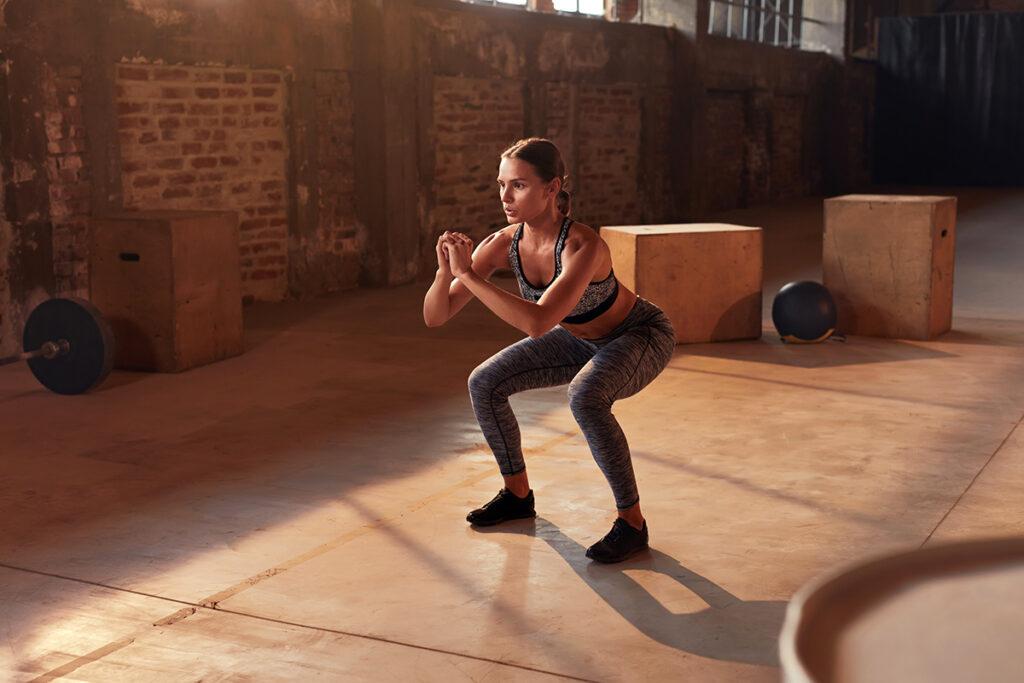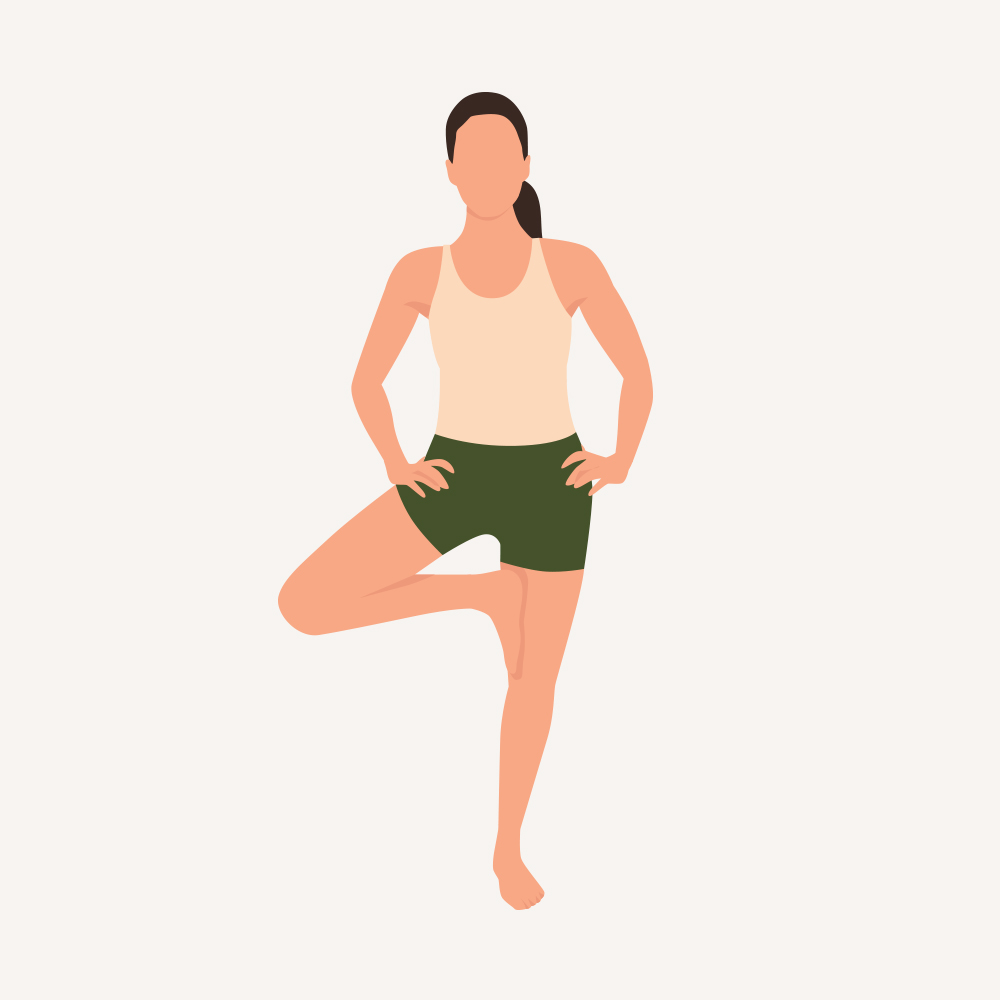Whether you’re an exercise newbie or seasoned pro, these at home fitness tests can help you take your fitness level to new, unimagined heights. Be it strength, endurance, flexibility or balance, you need them all to do any workout or sporting pursuit well. Heck, you even need them to live an energetic, full, and pain-free life.
Fitness tests give you something tangible and concrete to look at and work with, which is more powerful than a general, vague notion of fitness in your mind. Measuring your cardiovascular fitness, flexibility, balance and muscular strength will clue you into how fit you are, identify your strengths and weakness more clearly, and create a baseline on which you can build. This fitness blueprint allows you to set better, more specific goals and formulate a plan to improve your overall fitness, address any weaknesses, and develop your unique strengths. This can also help you to make specific improvements such as perfecting your running form, strengthening your tennis serve, or being able to perform yoga moves hitherto seemingly impossible.
Science-backed, but simple, these fitness tests by and large require little more than a stopwatch, pen and paper, and if you can swing it – an assistant. The other benefit of fitness testing is that you can repeat it at regular intervals to keep track of your fitness levels. This allows you to measure and quantify your progress which is motivating, provides feedback on the success of your workouts, and also helps you establish new targets to work toward.
Test yourself about every three-months. If you don’t score as well as you like, just remember to focus on improving your own scores periodically. As long as you are improving, your fitness plan is working. If you find you aren’t making the progress that you feel you should be seeing, it may be time to change your workout routine.
Testing Guidelines
Follow the instructions for the tests closely to get meaningful results. If you can, recruit a friend or partner to help administer the tests. They can help with timing and technique, by taking charge of the stopwatch and ensuring you perform the exercises in the right way and with good posture.
For the fitness tests to be reliable and repeatable, they need to be applied with absolute consistency. Variation in the performance of a test means the results from one assessment to the next cannot be accurately compared. To ensure your test results are as meaningful as possible it is important that the methods followed are exactly the same each time. Below are some guidelines to achieve consistency:
- Test yourself on the same day of the week at roughly the same time, as some test scores can be influenced by timing.
- For repetition-based tests, do each rep using identical technique. Make a note of the technique used and do exactly the same when you repeat the test.
- Postpone your tests if you don’t feel 100% – you results will be skewed of you aren’t feeling your best.
- Push yourself hard when testing but stay safe – do not risk injury by using sloppy technique in an effort to get an extra rep.
Safety tips
Below are some tips on how to complete these tests safely:
- Make sure you are physically capable of completing the tests safely before starting. If you have any doubts or concerns, ask for assistance from a physical therapist, certified trainer, or qualified health professional.
- Stop at any time if you need to.
- If you feel any of the following symptoms stop the test immediately: nauseous; light-headed; dizzy; pain; cold and clammy; short of breath; cramp in legs.
Complete a warmup before performing any fitness tests. This should consist of 5 – 10 minutes of light-intensity cardiovascular exercise, stretching, as well as some practice moves before each test (i.e. a few easy repetitions of the exercise that forms part of the test).1
test for
Cardiovascular fitness
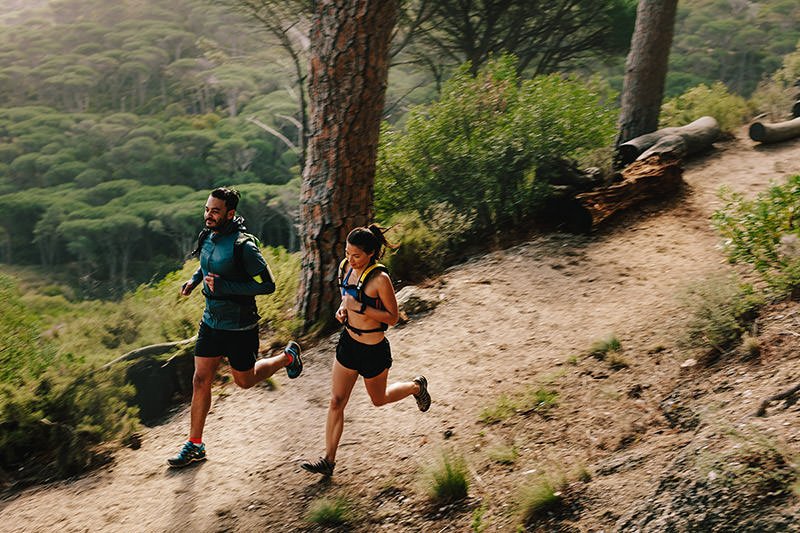
Why measure cardiovascular fitness? Cardiovascular fitness, or more specifically cardiorespiratory endurance, is how well the heart and lungs to deliver oxygen to your working muscles during continuous physical activity. It is an important indicator of physical health.
Good cardiovascular fitness is important for handling everyday activities, such as climbing stairs and walking, with ease. It allows you to get through the whole day with verve and vigor, and makes such an enormous contribution to quality of life that it can hardly be overstated. Having good heart and lung endurance means you can keep up with toddlers, run errands, complete household projects, and handle everything else life throws at you with energy and endurance. And when things are easier and not endlessly challenging, you can do them with more grace and good humor. In other words, your mood is likely to be better. But, the benefits are compounded and far greater than that – because everything is connected. Higher levels of cardiovascular fitness are associated with better executive brain function (e.g. ability to plan, reason, and problem solve), as well as positive structural, cellular, and molecular changes that directly impact mental health.23 In short, a good level of cardiovascular fitness makes life easier by directly and indirectly improving physical, intellectual, and psychological wellbeing.
In terms of ill health, a slew of research indicates that greater cardiovascular fitness is associated with a lower risk of death, disability and developing a laundry list of health conditions, such as cardiovascular disease, diabetes, high blood pressure, and certain cancers.45 Increased cardiovascular fitness has incredible and far reaching effects on the brain. It is associated with larger brain volume and appears to counteract brain atrophy (loss of brain cells) related to brain aging.67 It also future-proofs the brain so to speak, in that higher cardiorespiratory fitness levels are thought to lower the risk of dementia and are associated with better cognition later in life. 89
Cardiovascular fitness exerts a complex web of physiological and psychological benefits that overlap, reinforce each other, and act in ways scientists are still trying to unravel and understand.10 But the bottom line is simply this, good cardiovascular fitness allows you to live a full, productive, creative, and ultimately satisfying life.
The Test: 3-Minute Step
What it tests: Cardiovascular endurance.
How the test works: Heart rate is related to cardiovascular fitness. Therefore, this test measures post exercise recovery heart rate to assess cardiovascular (aerobic) fitness. The more fit a person is, the quicker heart rate returns to normal after exercise.1112
Equipment: Stopwatch, a 12-inch bench or step, a metronome (you can use an app or simply type metronome into google search)
Instructions
Step up and down a step for 3 minutes at a consistent pace and measure your heart rate immediately afterwards.
- Set the metronome to 96 beats per minute. Start the stopwatch. Step up and down the step, to the beat of the metronome, for 3 minutes.
- On each beat take a step with one foot. It takes 4 beats to complete one cycle, which works out at 24 steps a minute. For example, right foot up (1st beat), left foot up (2nd beat), right foot down (3rd beat), left foot down (4th beat). Keep repeating until the time is up.
- Immediately sit down when the 3 minutes are up and take your pulse for 1 minute. It is important to count a full minute, as heart rate changes fast during recovery.
Note! These test results are based on a 12-inch step. Using a higher or lower step will skew the results.
Cardiovascular Fitness Scores
Compare your results to the norms below.13
Women
| Age | 18-25 | 26-35 | 36-45 | 46-55 | 56-65 | 65+ |
|---|---|---|---|---|---|---|
| VERY GOOD | <98 | <99 | <102 | <104 | <104 | <102 |
| GOOD | 99-108 | 100-111 | 103-110 | 105-115 | 105-112 | 103-115 |
| AVERAGE | 109-117 | 112-119 | 111-118 | 116-120 | 113-118 | 116-122 |
| FAIR | 118-126 | 120-126 | 119-128 | 121-129 | 119-128 | 123-128 |
| POOR | >127 | >127 | >129 | >130 | >129 | >129 |
Men
| Age | 18-25 | 26-35 | 36-45 | 46-55 | 56-65 | 65+ |
|---|---|---|---|---|---|---|
| VERY GOOD | <89 | <89 | <96 | <97 | <97 | <96 |
| GOOD | 90-99 | 90-99 | 97-103 | 98-105 | 98-103 | 97-103 |
| AVERAGE | 100-105 | 100-107 | 104-112 | 106-116 | 104-112 | 104-113 |
| FAIR | 106-116 | 108-117 | 113-119 | 117-122 | 113-120 | 114-120 |
| POOR | >117 | >118 | >120 | >123 | >121 | >121 |
How to Improve Cardiovascular Fitness
Include cardiovascular activities such as brisk walking, running, hiking, biking, swimming, stair climbing, active dancing, rowing and even cross-country skiing in your workout routine, as well as smuggling it into your daily routine by walking and cycling when you can (instead of taking the car) or taking the stairs. Be sure to do an activity you actually enjoy and remember to always exercise with good form to get the most out of your workout.
You can also use cardiovascular machines such as the treadmill, elliptical trainer, step machine, stationary bicycle, and rowing machine.
To improve cardiovascular fitness aim to do:5
- 30–60 minutes of moderate intensity exercise on at least 5 days a week, or
- 20–60 minutes of vigorous-intensity exercise on at least 3 days a week, or
- a combination of moderate and vigorous exercise 3 to 5 days a week.
Walking is one of the easiest and simplest ways of performing moderate intensity exercise or even vigorous exercise. While it may not be heralded as much as running, walking boasts many of the same benefits. The great thing about walking is that you’re already an expert. If you want to start running, one of the best ways is to follow a run-walk plan for beginners that will get you running in no time.
Read more: How to measure exercise intensity
test for
Upper body strength
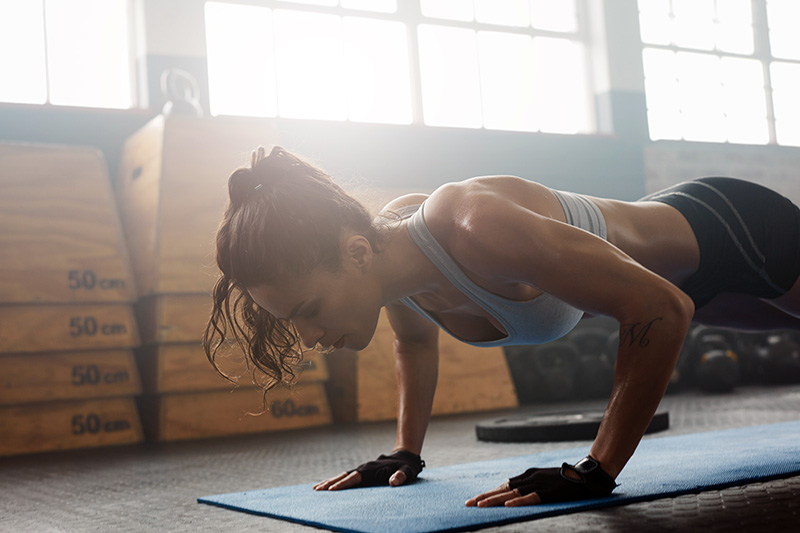
Why measure upper body strength? A strong upper body is necessary for athletic performance as much as it is for simple day-to-day tasks. You need a strong upper body to pick up the kids, carry luggage, or open a stubborn jar of pickles with ease. It is essential in sports that demand excellent arm and shoulder strength such as swimming, golf, and climbing. But good upper body strength and endurance also plays an important role in less obvious activities such as skiing and running that seem to be all about the legs.14 A strong upper body aids balance when running, facilitates good running form, generates force to propel you through your run, and improves running efficiency.1516
Furthermore, while studies show that increasing muscular strength generally is associated with longevity and better mental health, upper body strength (as measured by grip strength) specifically is an indicator of overall health.1718 Research suggests that it is a powerful predictor and biomarker of health, future disability, morbidity, and mortality across all ages.19
More specifically, a study of active adult men showed that those able to perform at least 40 push-ups in 30 seconds had a lower risk of suffering a cardiovascular event, compared to men who completed less than 10 push-ups.20
Test: Push-ups
What it tests: The strength and muscular endurance of the upper body, including the shoulders (anterior and medial deltoids), back of the upper arm (triceps) and chest (pectorals).
Instructions
Goal – Perform as many pushups as you can with good form.
Women should complete the test by performing a modified push-up (i.e. pivoting from knees), while men should perform a standard push-up (i.e. pivoting from the toes).
Rests are allowed but only on fully-extended arms. Incomplete push-ups do not count. If you are unable to push yourself off the floor or unable to complete two consecutive push-ups with good form, the test is over.
How to do a modified push-up with good form:
- Starting position: Place your knees on the floor with hands shoulder-width apart directly under the shoulders; hands pointing forward and elbows fully extended. Core, glutes, and legs should be engaged.
- The move: Bend your elbows, lowering your chest to the floor, while keeping your back straight throughout. Your elbows should be bent to 90 degrees at the bottom of the exercise.
- Push back up to starting position.
Note! This fitness test may not be appropriate if you suffer with shoulder, elbow, or wrist problems, as they may aggravate these issues.
Push-Up Test Scores
Compare your results to the norms below.13
Women
| Age | 20-29 | 30-39 | 40-49 | 50-59 | 60+ |
|---|---|---|---|---|---|
| EXCELLENT | > 29 | > 26 | > 23 | > 20 | > 16 |
| VERY GOOD | 21-29 | 20-26 | 15-23 | 11-20 | 12-16 |
| GOOD | 15-20 | 13-19 | 11-14 | 7-10 | 5-11 |
| FAIR | 10-14 | 8-12 | 5-10 | 2-6 | 2-4 |
| POOR | < 10 | < 8 | < 5 | < 2 | < 2 |
Men
| Age | 20-29 | 30-39 | 40-49 | 50-59 | 60+ |
|---|---|---|---|---|---|
| EXCELLENT | > 35 | > 29 | > 24 | > 20 | >17 |
| VERY GOOD | 29-35 | 22-29 | 17-24 | 13-20 | 11-17 |
| GOOD | 22-28 | 17-21 | 13-16 | 10-12 | 8-10 |
| FAIR | 17-21 | 12-16 | 10-12 | 7-9 | 5-7 |
| POOR | < 17 | < 12 | < 10 | < 7 | < 5 |
How to improve upper body strength
Improve upper body strength with opposing and complementary exercises that target the front and back. This means strengthening your ability to push, pull and press with your arms, shoulders, back and chest by including a combination of push and pull exercises.
- Pull exercises target the back and biceps. Pull exercises entail any movement that bring weight towards your body, such as pull-ups, bent-over rows, and biceps curls.
- Push exercises work the chest, shoulders, and triceps. Push exercises are comprised of movements in which you push weight away from your body and include moves such as the push-up, chest press, and triceps extension.
It is tempting to focus on (pushing) exercises that target the chest, abs and arms, as these parts of our body are most visible. This means (pulling) exercises that work the opposing muscle group – the back – can be neglected. Indeed, research shows people commonly focus on the chest and neglect the back.21 Avoid this biased, unbalanced way of exercising which can create muscular imbalances between chest and back, and lead to problems like poor posture (e.g. rounded shoulders), pain, and an increased risk of injury.22
Also be sure to include a few unilateral exercises (moves that work one side of your body at a time) in your strength training routine to address any strength imbalances between the dominant (often the side you write or throw with) and non-dominant side of your body. Many bilateral exercises (moves that work both sides of the body) can also be performed as unilateral exercises. Unilateral moves include the side planks, bicep curls, single-arm tricep extensions, single-arm rows, and single-arm chest presses.
test for
Core Strength
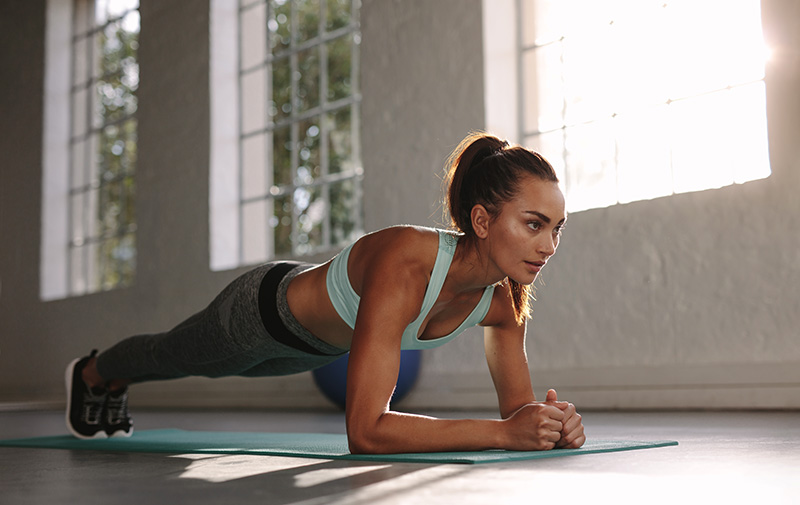
Why measure core strength? Because your core is not just your abs. Your core, a complex system made up of muscles from the abdomen, back, hips, and glutes that wraps your body like a corset, is the glue that keeps everything together, balanced, strong and stable. Your core muscles play a crucial role in everything from running, biking, and doing household chores to bending over or simply standing. Sometimes called “nature’s back belt”, it acts as a support system for the entire body and is its foundation of stability. The core is also the center of movement, needed in almost every activity you do. 23
The core facilitates movement by stabilizing the body and acting as a conduit, transferring power from the lower to the upper body. When you throw a ball, more than half the energy actually comes from your core and lower body.24 So a strong core makes the rest of your body more capable, and exercise and everyday tasks easier and safer. Strengthening your core can improve athletic performance, while a weak core can impede performance, place greater strain on the joints and predispose to suffering injury.2526 A strong core is particularly important in women, who are more likely than men to suffer with knee injury if they have poor core stability.27
Nothing like your average, run-of-the-mill muscle group, the core is about more than just creating movement. A lot of what the core does actually involves preventing unwanted movement. When you lack core stability, undue pressure is put on your spine and you end up using other muscles to compensate, leading to a host of problems including fatigue, discomfort, pain, and injury. It is especially linked to low back problems.2829 Even when you’re doing nothing but standing or sitting, the core has to show up and do its thing to keep you upright. When it’s weak it can’t stabilize your posture, and simply standing still for any length of time becomes uncomfortable and challenging, or even painful.
Increasing core strength and stability improves movement throughout the body. Training your core can also help reduce back pain, protect you from injury, boost athletic performance and make it easier to carry out routine chores and everyday activities.3031
The Test: Plank
What it tests: Strength, endurance, and stability of the core.
Equipment: Exercise mat, stopwatch
Instructions
Goal – Hold a forearm plank as long as you can
Start the clock as soon as you are in plank position, and hold as long as possible.
If you lower or raise your hips, or otherwise break perfect form in any way, the test is over.
How to do a forearm plank with good form:
- Place your forearms on the ground, with your elbows directly under your shoulders and your feet behind you so that your body forms a straight line from head to heel – like a plank of wood.
- Your hips should be level with your shoulders, and your weight should be on your forearms, elbows and toes. Look down at the floor and keep your neck relaxed.
- To stabilize your body keep your core engaged, squeeze your glutes, anchor your toes into the ground, and focus on your breathing.
Plank Test Score
Compare your result to the scores below.32Level Time (secs) EXCELLENT > 120 VERY GOOD 60 – 120 GOOD 30 – 60 POOR < 30
Athletes should be able to hold a plank position for at least 60 seconds.33
Core strength was often assessed using sit-ups or curl-ups. However, they have fallen out of favor, as research suggests that sit-ups and curl-ups are not sensitive enough to assess core strength and endurance, and may cause lower back or neck injury. 34 The forearm plank is thought to be an alternative means of assessing core endurance.35
How to Improve Core Strength
Pilates and yoga are great exercises that improve core strength, as well as flexibility and balance. When doing strength training workouts, incorporate exercises that engage your core. Remember that the many different muscles of the core work together – your core works as a whole. Therefore some of the most effective core exercises don’t simply target one area, but work multiple muscle groups simultaneously. This method helps you to target all your major core muscles to build a strong and well-coordinated core. This keeps your core muscles balanced (i.e. equally strong), which is key to avoiding injury and improving function and performance.
There are many ways to strengthen your core:
- Some of the best exercises are simple bodyweight exercises, such as the pushup, superman, bird dog, glute bridge, side bridge, and, yes, the plank and its variations.
- You target the core whenever you do compound exercises such as squats, lunges, dead lifts, and overhead presses, as it has to be actively engaged throughout those moves.
- Great core moves that require equipment (weights, resistance bands) are the farmer’s walk and Palloff press.
- Many exercises on a stability ball really work the core and improve core stability.
- If you have good core strength, you can also include plyometric exercises such as double leg jumps and single leg hops to increase core stability.
Avoid exercises that involve repeated flexing, jerking, or forceful rotation of the spine (e.g. crunches, situps, and oblique twists), as these moves can put a lot of pressure on the spine and strain your back.
test for
Flexibility
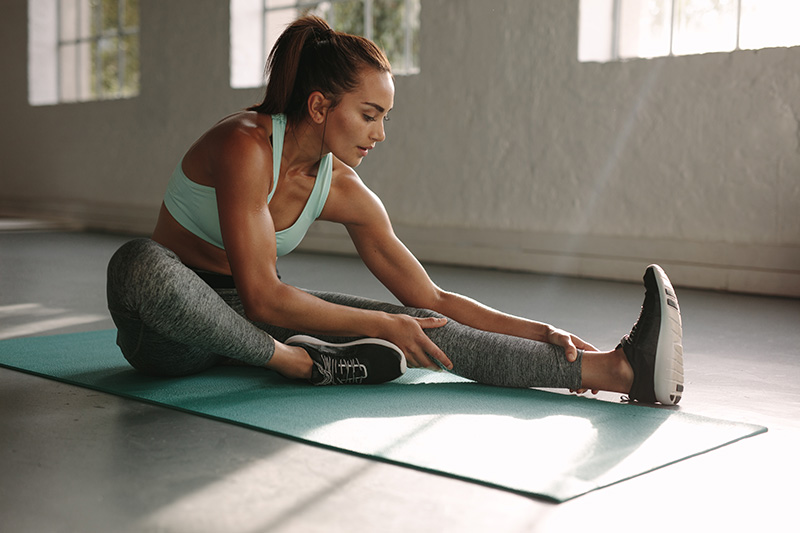
Why assess lower body flexibility? Flexibility refers to the ability of the joints to move through their full range of motion. Good flexibility facilitates movement and may help prevent injury. It also helps to maintain good posture, balance, coordination, and skilled movements. Being flexible makes everyday activities and tasks easier, and can also be important for athletic performance. 36
If you don’t score well, your hamstrings might be tighter than they should be. Tight hamstrings can pull back on the pelvic bone, putting strain on the lower back and causing low-back pain. It can also put too much strain on some joints, leading to increased wear and tear on the joints, and may ultimately cause injury and pain. Tight hamstrings can also lead to inefficient movement by reducing range of motion. For example, if you’re a runner this might cause you to run with poor form, reduce your stride length, and limit how fast you can run.
As with everything the ultimate goal is balance. That means being flexible enough to do day-to-day activities and athletic activities comfortably and uninhibited – this generally does not require the extreme flexibility of a gymnast or seasoned yogi!
The Test: SIT & REACH
What it tests: Flexibility of the lower body – specifically the hamstrings (back of thigh) and to a lesser degree the lower back.
Equipment: Ruler, adhesive tape, box
Instructions
Place a box that is about 30cm tall on the floor and afix a ruler on top of it so that the 26cm mark is at the edge of the box. In other words, the ruler should jut out 26 cm over the front of the box. Place the back of the box against a wall, do it does not shift.
- Starting position: Remove your shoes and sit on the floor with your feet flat against the front of the box and your legs straight and together.
- The move: Slowly and steadily lean forward with extended arms, sliding your fingers up the ruler as far as you can. Hold there for 2 seconds.
Some further guidance:
Bend from the hips. Keep your knees extended, but not pressed down. Your hands should be parallel to the floor and you should lead with both hands. Breath normally during the test, and do not hold your breath.
To reach as far as possible, breath out and drop your head between your arms when reaching forward.
Make a note of how far down you reach (in cm). Relax and repeat twice more.
Your best score is the most distant point you can reach.
Sit & Reach Test Scores
Score your results against the norms below.13
The scores are recored in cm.
Women
| Age | 20-29 | 30-39 | 40-49 | 50-59 | 60+ |
|---|---|---|---|---|---|
| EXCELLENT | 40+ | >40 | >37 | >38 | 34 |
| VERY GOOD | 37-40 | 36-40 | 34-37 | 33-38 | 31-34 |
| GOOD | 33-36 | 32-35 | 30-33 | 30-32 | 27-30 |
| FAIR | 28-32 | 27-31 | 25-29 | 25-29 | 23-26 |
| POOR | <28 | < 27 | < 25 | < 25 | < 23 |
Men
| Age | 20-29 | 30-39 | 40-49 | 50-59 | 60+ |
|---|---|---|---|---|---|
| EXCELLENT | > 39 | > 37 | > 34 | > 34 | >34 |
| VERY GOOD | 34-39 | 33-37 | 29-34 | 28-34 | 25-32 |
| GOOD | 30-33 | 28-32 | 24-29 | 24-27 | 20-24 |
| FAIR | 25-29 | 23-27 | 18-23 | 16-23 | 15-19 |
| POOR | < 25 | < 23 | < 18 | < 16 | < 15 |
Quick Flexibility Test
If you do not have a 30cm box to hand, you can take this quick test, to get a rough estimate of your flexibility.
Instructions
- Starting position: Take your shoes off and sit down with your feet shoulder-width flat against a wall and your legs extended.
- Slowly and steadily reach forward with your arms extended and try to touch the wall with your knuckles, fingertips, or palms.
- Hold this position for 3 seconds. Repeat 2 more times, and record your best score.
Compare your best score against the table below.3738
| Final Reach Position | |
|---|---|
| EXCELLENT | Palms |
| VERY GOOD | Knuckles |
| GOOD | Fingertips |
| POOR | Cannot touch wall |
How to improve flexibility
Hamstrings may be naturally tight (think genetics) or be caused by factors such as sitting with poor posture for long periods, putting a lot of strain on them, or injury. Tight hamstrings can also be a result of weak muscles elsewhere. Weak glutes, weak abs, a weak back, and even weak feet can play a role in causing tight hamstrings.
Therefore, depending on the cause of poor lower body flexibility, the answer is often not to simply stretch the muscles to lengthen them, but to strengthen the muscles of the lower body with corrective strength training exercises.
Incorporate dynamic stretching in your warm-up before exercise, which has been shown to improve flexibility, range of motion, and workout performance.39
Practicing yoga or Tai Chi regularly can improve flexibility.4041 Foam rolling too, may help increase flexibility of the hamstrings and lower-back, as well as improve range of motion.4243
Test for
Balance
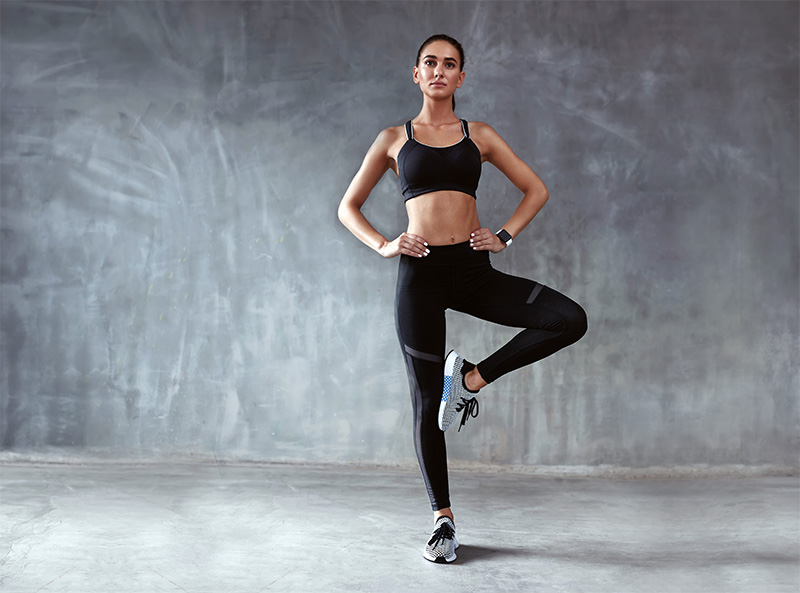
Good balance is a key part of good health and overall fitness, and essential for everyday activities. Virtually all movements require balance.
Better balance helps athletes to perform at a higher level, as it allows them to move with greater efficiency and lowers the risk of sustaining a sporting injury. Balance becomes even more important with age, because after middle-age it starts to decline. Poor balance adversely affects quality of life and longevity, and is associated with a greater risk of falls and injury.444546
- Equipment: Stopwatch, flat non-slip surface
- Goal: Stand on one leg for as long as you can.
- What it tests: Static balance
Test Score
Compare your time in seconds to the norms in the chart below.47Score EXCELLENT >50 GOOD 40-50 AVERAGE 25-39 FAIR 10-24 POOR < 10

